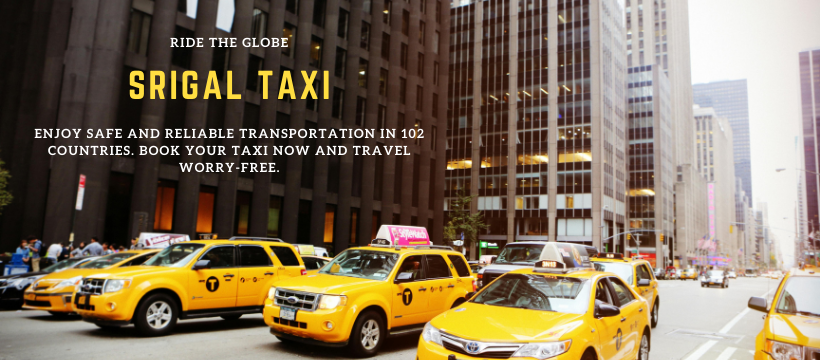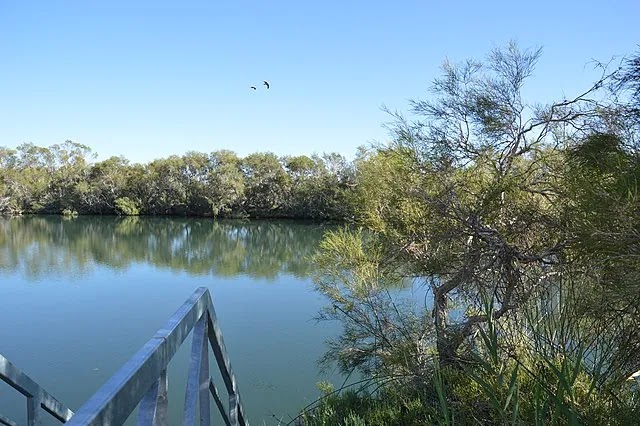
Witjira National Park has more than 120 mound springs. It includes the fascinating National Heritage-listed Dalhousie Springs.
Aboriginal people have used it for thousands of years as a source of shelter, food, and medicine. It is possible to swim in the warm waters of the main spring.

The area is home to unique fish, such as the Dalhousie hardyhead. It also has other rare aquatic life found nowhere else in the world.
The springs and camping spots attract visitors, without any doubt. Witjira has top visitor facilities. It makes the park one of the most popular in the outback.
More Information About Witjira National Park
Visit this fantastic park a few weeks after a soaking rain. You can witness the ephemeral wildflowers bursting into bloom.
This area is part of the traditional country of the Lower Southern Arrernte and Wangkangurru people. It has special cultural significance to members of these groups.
The ancient springs of this area have a strong mythological significance for Aboriginal people. They are featured in many tribal stories and songs.
There are many Aboriginal cultural and heritage sites within the park. A Co-management Board manages the park. It comprises members of the two groups.
It also includes members of the Department of Environment and Water. Toilets and cold shower facilities are available at the Dalhousie Springs campground.
At Purni Bore Campground, you can find hot showers, toilets, and a shade shelter. The last spot to fill up on drinking water before you cross the desert is a Creek Campground.
It is possible to get emergency water from the bore there. There are many Aboriginal cultural and heritage sites within the park.
The Co-management Board has members from both groups. It also has members from the Department of Environment and Water. It manages the park.
The Dalhousie mound springs have been part of Aboriginal life for thousands of years. They were first sighted by Europeans on 10 December 1870.
A small party of surveyors working on the Overland Telegraph Line in search of water located the springs. Ned Bagot took up the first lease of Dalhousie Station on New Year’s Day in 1873.
Later, other stations, including Bloods Creek, Mount Dare, and Federal, were also leased. The Dalhousie Pastoral Company later combined them.
In the 1950s, people bred sheep, angora goats, horses, camels, and cattle on this station. They also attempted agriculture, planting lucerne near the Dalhousie main spring.
After a century of pastoralism, the mound springs had become degraded. It has national, biological, geological, and cultural significance.
The local people purchased the 77769 square kilometer station on 21 November 1985. They dedicated it to this magnificent National Park, then.
Dalhousie Springs
If you plan to cross the Simpson Desert, Dalhousie is on your way in or out. Every Simpson Desert tourist seems to stop and camp overnight at Dalhousie.
Dalhousie Springs is part of a chain of mound springs extending along the outer rim of the Great Artesian Basin. It is one of the mentionable attractions of Witjira Park.

The artesian water rises up from a considerable depth through cracks and fissures in the subterranean strata. At the point of exit, the water is millions of years old.
It originally entered the system in the Finke River area in the Northern Territory. The water in the Dalhousie Main Spring is around 37 degrees, making it perfect for a relaxing soak.
Bloods Creek
The Bloods Creek windmill stands as a solitary reminder of what was once a thriving cattle station. Bloods Creek operated for some years as a pastoral lease in its own right.
Then, Edin Lowe amalgamated it with Federal, Mt Dare, and Dalhousie Springs to form the Dalhousie Pastoral Company.
Chance of exploring Purni Bore
The French Petroleum Company created the Purni Bore in 1963. They were exploring the rock strata beneath the Great Artesian Basin.
They drilled the bore to a depth of 1880 meters, capped it, and sealed it. The waterhole is now permanent, without any doubt.
It attracts many bird species that seek respite from the desert heat. The flowing water bore head is boiling at 85 degrees Celsius.
The Old Ghan Railway
Some of the best sidings of the Old Ghan Railway are inside or close to Witjira National Park. You can make a round trip from Dalhousie Springs.
You can go via Dalhousie Homestead Ruins. You can also go through the tiny Pedirka Desert. Then, You will eventually come to Pedirka Siding.
Continue north once you get to Hamilton Station. Follow the signs to Mt Dare, and you will pass by the gorgeous, shady Eringa Waterhole.
It is also the site of Sir Sidney Kidman’s first homestead. Keep heading north, and you will find yourself at Abminga Siding.
Return to Dalhousie Springs via the track. Yes, it is a tiny station track. It leads to Bloods Creek, the site of another historic but now abandoned homestead.
This round trip is 220km. You can comfortably do it in a day, with plenty of time to swim at Eringa Waterhole and Dalhousie Springs.
Dalhousie Ruins
The ruins of Dalhousie Homestead are a 12km drive from Dalhousie Springs. The drive takes only fifteen minutes and goes through a dramatic desert landscape.
The public can visit the ruins nestled among date palms and small mound springs. It is hard to imagine living here when you stand and gaze at the stark desert landscape.

The Dalhousie Pastoral lease was first taken up by Ned Bagot in 1873. The homestead and several other buildings remain. These include a blacksmiths shop and stockyards.
Conclusion
Witjira National Park is a surprising mix of adventure. It has bubbling artesian springs and history. This fascinating place is on the edge of the Simpson Desert.
Witjira is a great place to visit if you are new to off-road travel. You can practice your driving and bush camping there.
You will get a taste of what it is like to visit the remote outback. You can have a big desert adventure without experience or equipment.
The location of this spot is in an ideal area. You can drive in from the Stuart Highway. You can even drive up from Oodnadatta Track in less than a day.
- 8 INTERESTING FACTS ABOUT PALAU: AN ISLAND IN THE PACIFIC OCEAN
- GIBSON DESERT NATURE RESERVE: A BEAUTIFUL PLACE IN AUSTRALIA
- KOROYANITU NATIONAL PARK: A GREAT PLACE TO EXPLORE FIJI

A Bangladeshi entrepreneur. A person who loves nature, a web developer, and the founder of Srigal and Nehrin.